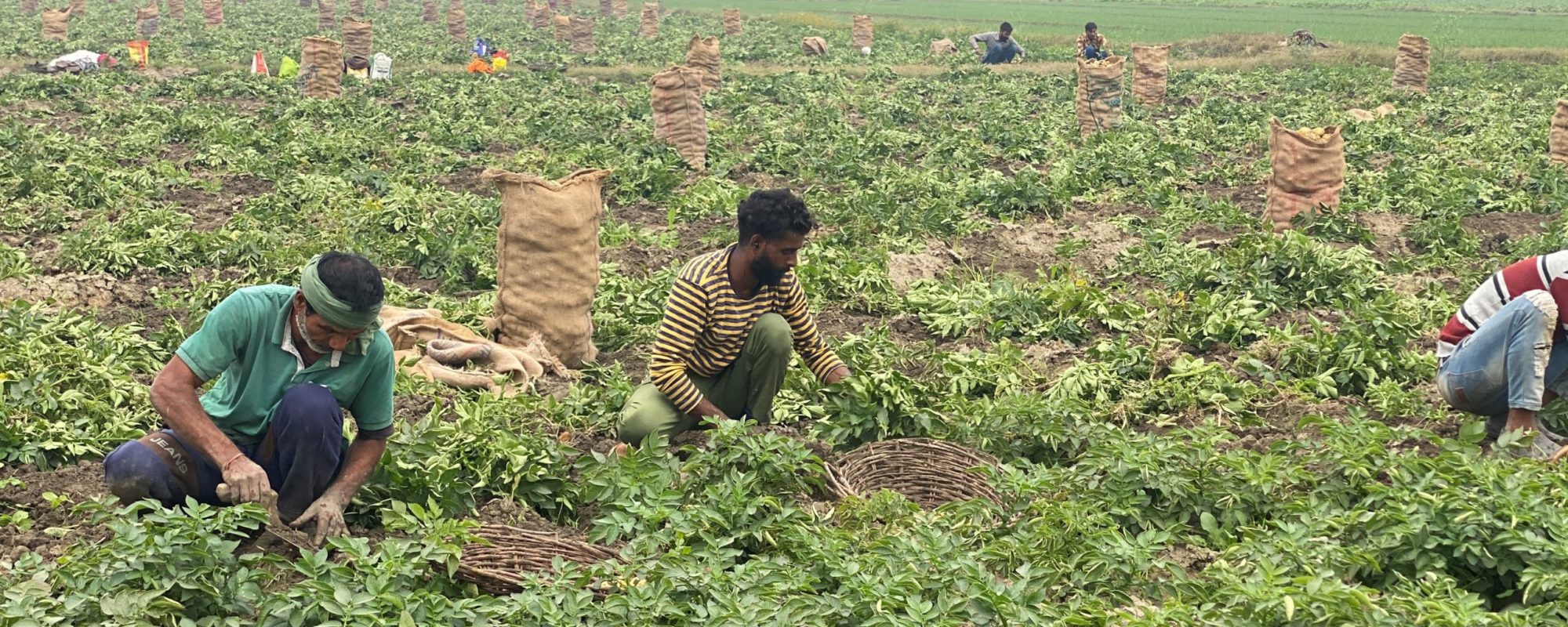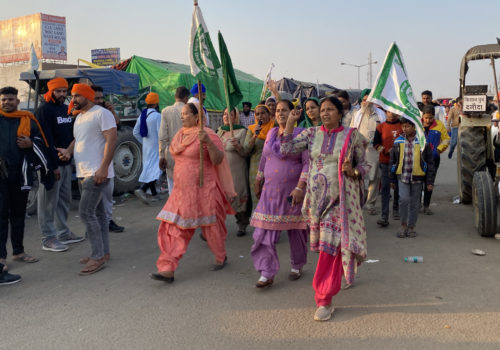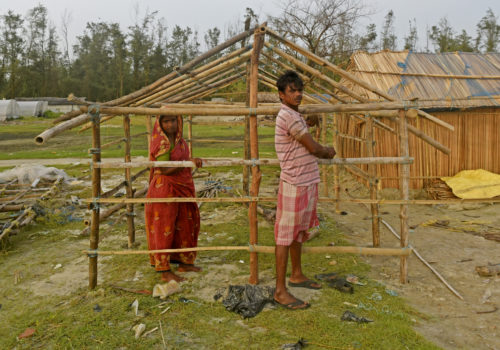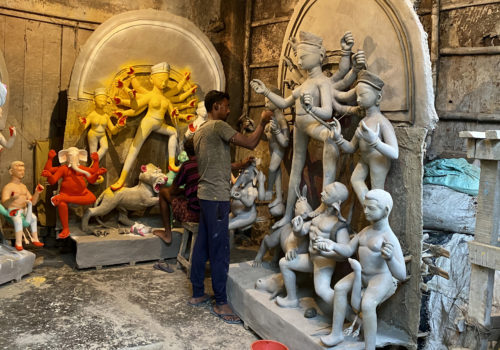AMRITSAR, India — The Golden Temple in this northwestern walled city was the final stop for Sikh farmers marching to celebrate victory last December. They had been protesting for more than a year on the outskirts of the capital Delhi against controversial farm laws enacted by the Indian government. Their demand to have them repealed had finally been accepted, and now they could return to their homes in the northern agricultural states of Punjab and Haryana. The trip back would resemble the journeys that kicked off the protest in November 2020: travel by foot, in cars crammed with fellow protesters, and in tractor trolleys, where they slept.
Along the way, they would pay their respects at a sacred shrine gilded with gold in Punjab’s second-largest city, its cultural and commercial center. Sikhism, a monotheistic religion, originated in this region in the 15th century and now has some 30 million devotees. This day was auspicious: the announcement of the repeal coincided with the birth anniversary of Guru Nanak, the founder of Sikhism. As the Samyukt Kisan Morcha, a group of 40 farm unions that had led the protests, entered the main gate of the temple complex, politicians, NGOs and supporters gave them a rousing welcome, showering them with rose petals, sweets and garlands. A congregation inside a large dining hall followed, where Harjinder Singh Dhami, the president of a national committee tasked with managing Sikh temples across the country, gave a speech. “It is a blessing that on the occasion of Gurpurab, the prime minister announced the repeal of three black laws enacted by the government of India,” he said.
Dhami acknowledged the some 700 farmers who died during the year-long protests, a sobering reminder that the path to victory had been long and difficult. The farmers first came together in September 2020 after the enactment of three controversial laws designed to modernize the agriculture industry, which they argued favored large corporations. They set up campsites on the outskirts of Delhi, where they would stay for over 300 days, weathering extreme heat, rains and bone-chilling, toxic winter air. The chasm between them and the government had only widened by the following January when the protest turned violent for the first time on India’s Republic Day. Police charged at thousands of protesters with batons as they were trying to enter the historic Red Fort in Old Delhi, the site of the city’s annual parade, allegedly killing at least one protester.
So when, in November, Prime Minister Narendra Modi announced his decision to repeal the laws, many were surprised, describing the move as a major U-turn. In a televised national address, he gave an unusual show of contrition: “Today, I beg the forgiveness of my countrymen and say with a pure heart and honest mind that perhaps there was some shortcoming.”
In Amritsar, the announcement was met with hope and jubilation by hundreds of families who had long supported the movement. “It was an unforgettable day,” Gurbir Singh said. “People were singing and dancing on the streets. We played the dhol [barrel drums] all day.”
Forty-two-year-old Singh is tall and lanky and lives in Bhorshi Rajputa, a village some 22 miles outside the city center. That day, he sported a crisp white shirt that matched his turban, and a beard graying at the ends. Like many in Punjab, he hails from a family that has looked after its ancestral farmland for generations. He described seeing his grandfather and father waking up at the crack of dawn to tend to their crops with utmost care: “They would press their fingers into the soil to see how fertile it was and hold wheat crops under the sun to make sure they were thriving.”
Unlike his family, however, Singh planned to leave farming behind to pursue a different career. But when he was 19, his father suddenly died in an accident, forcing Singh to drop out of college and take over the farm to support the family. The challenges were plenty: Singh’s father had been a marginal farmer with less than a hectare of land, where he cultivated wheat and rice.
The government incentivized the production of those crops during the Green Revolution in the 1950s and ’60s through a price guarantee program called “minimum support price” or MSP, a safety net for farmers in return for helping feed the country during a famine. The continuous cultivation of rice and wheat led to water scarcity and soil depletion, which in turn prompted a growing dependence on chemical pesticides. It also made selling the two at a profit near impossible.
“Suddenly there was so much grain that it was now cheap,” Singh said. “You’re lucky if you got 1,000 rupees for a quintal [$13 for 200 pounds].”
So Singh began experimenting with farming techniques and became a seed seller, growing hybrid chilies and other varieties of vegetables. Over the years, his land holdings have grown to 10 acres, and he now hires migrant laborers from Uttar Pradesh, Bihar and other states. Standing in front of his farm, he proudly held out hybrid chilies, their light green, unripened bulbs glistening in the sun. The scent of mustard wafted from a bright field sprouting with yellow flowers across the road, where farmers were busy cultivating mustard seeds.
Singh’s decades of hard work in a declining industry made one thing clear to him: “We desperately need modern and innovative solutions for farming today.”
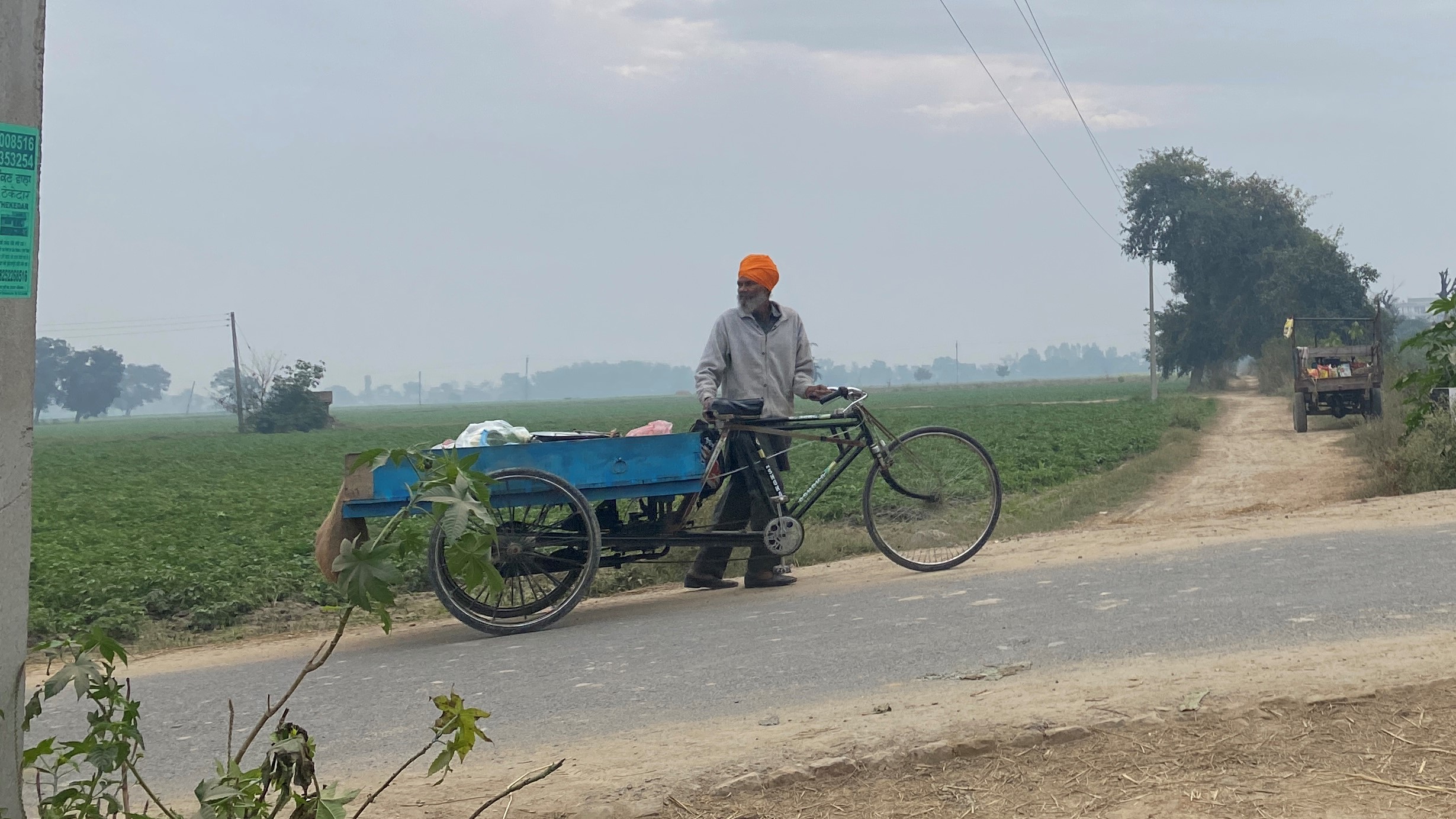
Singh isn’t alone. Agriculture in Punjab, known as India’s breadbasket, has been under severe stress since the early 1990s. Water scarcity, shrinking incomes, the lack of land reform and the growing influence of businesses in agricultural production have all helped lead to a large-scale agrarian crisis. While Singh managed to survive by experimenting with crop diversification, the fate of most poor farmers in Punjab has been harsh, with unemployment and debt and some turning to suicide.
Official studies show as many as 86 percent of farmers and 80 percent of agricultural labor households mired in debt. More than 8,000 farmers took their own lives between 2000 and 2015. The highest number of suicides was in the Malwa region in southeast Punjab, which has a majority of “small and marginal” farmers, or those with less than 2 hectares of land.
According to one rural outlet called Gaon Connection, the tragic stories include that of Balwinder Singh in the Patiala district in Malwa, who died by suicide in 2011 after not being able to discharge a debt of 7 lakh rupees ($9,380), leaving the debt behind to his wife and son. Kulwant Singh, a school-going son of a farmer, died by suicide in 2018 after his family was unable to pay school fees on time. His father has since sold their hectare of land and taken up manual labor to pay off debts.
Even alternatives like crop diversification have been non-starters for Punjabi farmers stuck in such situations who find it hard to escape cycles of debt and ecologically damaging cropping patterns. Many farmers said they were trapped in the “mandi” system, the wholesale warehousing of crops that are bought by arhtiyas, or commissioning agents. They form links between farmers and buyers and wield great control as moneylenders.
The now-repealed farm laws were intended to address such problems. Taken together, the government argued, they would loosen previous rules around the sale, pricing and storage of produce. Moreover, they would eliminate commissioning agents and allow for direct sales. To farmers like Singh, however, the changes presented a bigger threat than the middlemen agents: They would allow for the entry of private players and corporations who could dictate their prices and monopolize the farming industry.
Instead, most agricultural experts advised greater public investment and government support.
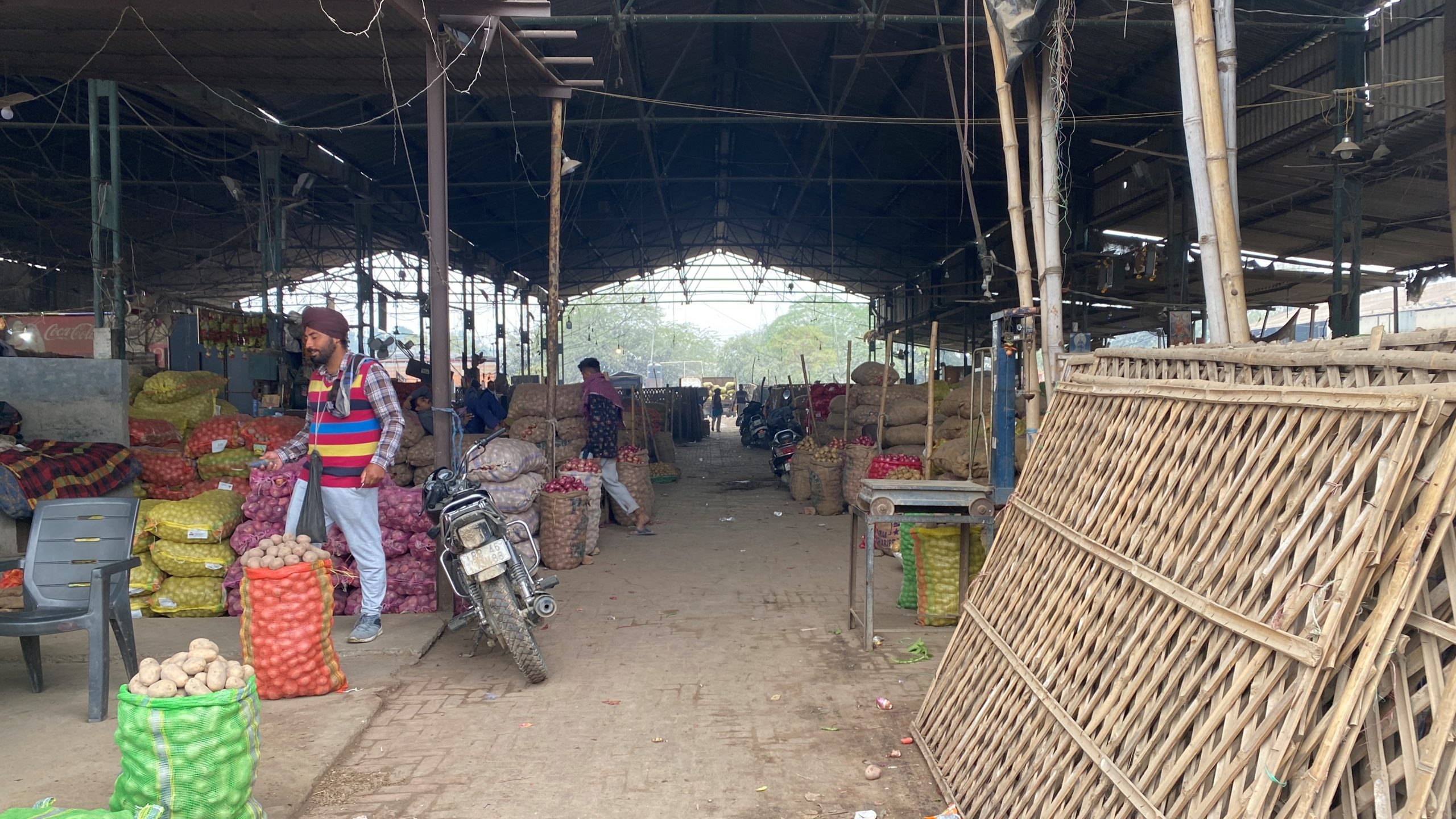
Navkiran Natt, co-founder and editor of Trolley Times, a highly influential bilingual newspaper that began with the farmers’ movement, said the protests weren’t just about the bad treatment of farmers but also the “snatching of land” by a few big players. “Punjab has a different relationship with farmland—it is like our god or mother,” she said. “To have that taken away by big companies was unimaginable.”
Natt returned from the Delhi protests a few weeks before I spoke to her. She was easily identified by a thick scarf around her neck and a look of determination on her heart-shaped, dimpled face while planning another edition of the paper. The protest site became her temporary home and marked many milestones: she had conceived a publication, celebrated her 30th birthday and heard about the repeal there.
Now sitting in her modest home in Punjab, Natt said the news was exciting but also left her feeling skeptical: “We were doubtful that [the repeal] would happen since it was only an announcement.”
“When you’re involved politically, you see things a little differently,” she added. “People can go back on their word easily.”
That skepticism comes from years of activism. Both her parents were union members who mobilized friends and neighbors against the farming crisis. A dentist who later earned a master’s degree in film studies, Natt arrived at the protest last November to support her parents. She soon noticed that mainstream Indian news channels, most controlled by a handful of corporations operating under immense political pressure, were quick to brand the farmers as propagators of the “Khalistani agenda,” a reference to a violent separatist movement in the 1980s and 1990s aimed at establishing Khalistan, an independent homeland for Sikhs.
“Each individual farmer has his own story,” she said. “We wanted to show that he wasn’t just protesting, he was also going through his own struggle at home.”
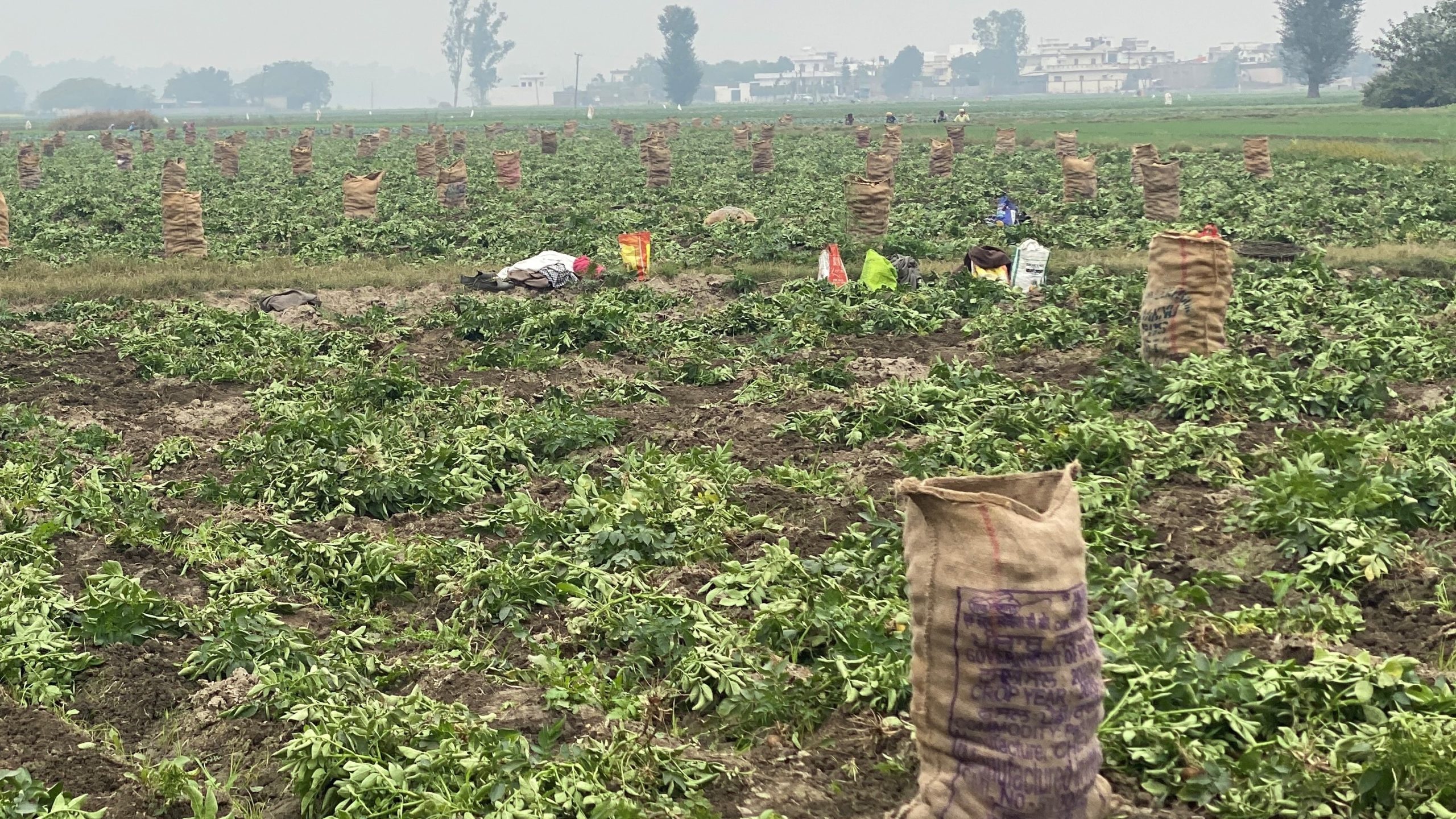
So Natt founded Trolley Times with three friends at the protest, initially as a bi-weekly newsletter to inform farmers about new developments in the union negotiations. Although none of the editorial team was a journalist, the newspaper soon became a way to “champion the farmers’ cause and spread awareness about agrarian issues,” she said. By the time Modi repealed the farm laws, Trolley Times had just published 7,000 print copies of its 22nd edition and was being read by 40,000 readers online.
Natt is now trying to figure out how to transition Trolley Times from covering protests to the ongoing agrarian distress more broadly. “There’s no agricultural beat in the country’s media despite agriculture being a huge job provider,” she said. “It’s why people didn’t understand why the farmers were protesting in the first place.”
Back in Amritsar, where history and modernity easily intertwine, the bustling streets of the walled old city have bazaars where vendors sell homemade lassi, or buttermilk, next to a McDonalds where customers order burgers on their phones. A stone’s throw away stands the Partition Museum, housed inside a former colonial town hall, now a repository of historical archives that document the division of British India into India and Pakistan. Along the main roads, several billboards advertise Canadian permanent residency and newly built malls, reminders of a Sikh diaspora dispersed around the world.
Many farmers acknowledge that the global Sikh community of an estimated 12 million people played an instrumental part in drumming up international support for the farmers’ cause. Khalsa Aid, a global organization of Sikh diaspora, calls itself the “children of kisaans [farmers],” and often maintain a tight bond with family back in Punjab. Sikhs in the United States, Britain, Canada and Australia demonstrated outside Indian embassies during the protests, joined the protest in Delhi and assisted financially.
In Gurdaspur, another small farming village 50 miles from Amritsar, Manjeet Kaur lives in a small concrete house, where many rooms are still under slow construction supported by the remittances her husband, Amandeep Singh, sends back from working as a laborer in Dubai. In his absence, she has followed a fixed routine to manage the household alone for over five years: In the morning, she milks her three cows before churning fresh hay through a rolling machine. Then she cooks the day’s meal—usually saag, a fresh curry made with greens—for her three children, aged 5, 11 and 16, who have stayed home for online schooling the past two years due to the pandemic. She heads out to her small plot of land by the afternoon, digging into the ground to harvest potatoes. In the evening, neighbors come by to collect fresh milk, from which she earns about 200 rupees ($2.69) daily.
Kaur’s household duties prevented her from joining the protest, so she sent bags of potatoes along with neighbors to show her support instead. “My husband sent money from abroad, while my brother, who is a farmer, camped out at Tikri for months,” she said of one of the protest sites. “How could I not show my support?”
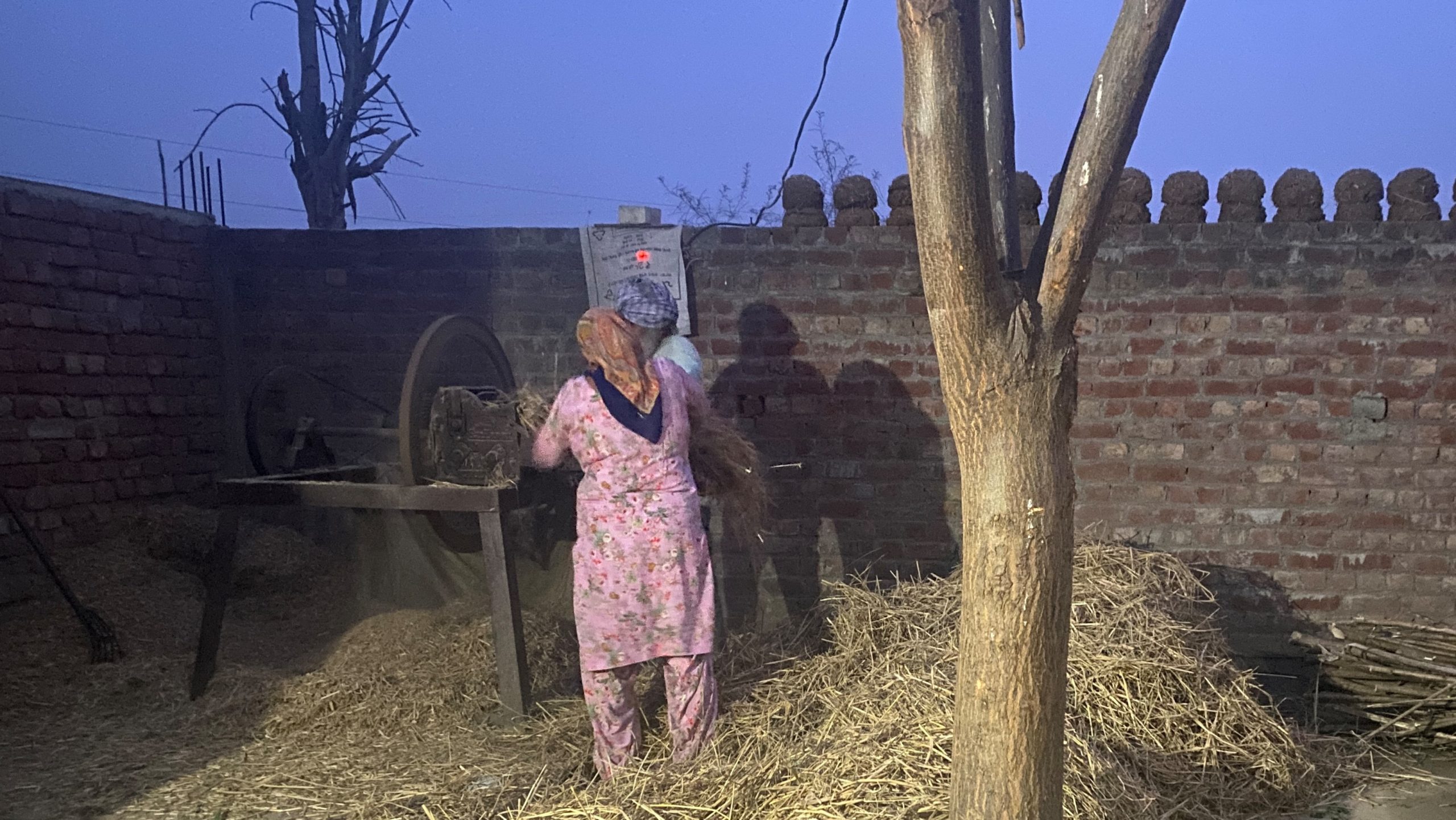
For her part, Natt—the only female on the Trolley Times editorial team—feels the protests could not have succeeded without the involvement and support of women like Kaur. Those who stayed home helped by taking over the farming and tending to the fields and livestock, while their husbands, in the absence of wives and mothers, were tasked with “women’s work” at the protest sites: Suddenly, those who had never picked up a kitchen knife were peeling garlic and chopping onions for their daily meals.
At the same time, women at the campsites also became more visible. “Simply being at the protest meant that women could not be told to go home, to be in the kitchen,” Natt said.
To be sure, she doesn’t think the farmers’ protests sparked any “big gender revolution.” The Samyukta Kisan Morcha committee of unions still has only one female representative. “But women were an integral part of the efforts, and it was the first time that an agricultural movement had over 50 percent of women,” Natt said.
For Kaur, the protest’s success prompted immense pride in her community. “Everyone in Punjab works so hard,” she said. “Our lives as farmers are inseparable from our land.”
With the repeal of the laws now ratified by parliament, along with a promise that a committee would be formed to ensure a guarantee on minimum pricing, Punjabi farmers are now returning to farming. But the struggle to improve farmers’ lives continues.
With state elections approaching in the northern states of Punjab and Uttar Pradesh—both with a huge base of farmers—in February, the government’s critics are questioning whether the decision to repeal was just a calculated electoral move by the ruling nationalist Bharatiya Janata Party. The party promises to resolve the ongoing challenges of the farming community, while the opposition Congress Party accuses the BJP of failing to support farmers economically, accusing the so-called saffron party’s “anti-farmer” policies of pushing the farming community into acute crises.
Regardless of election outcomes, the agrarian emergency is far from over, Natt said. “It did not start because of the farm laws, nor will it end with the repeal. There’s still a long struggle pending.”
Top photo: Laborers harvest potatoes in the Gurdaspur district near Amritsar, Punjab

